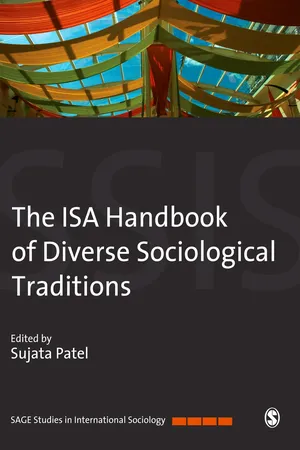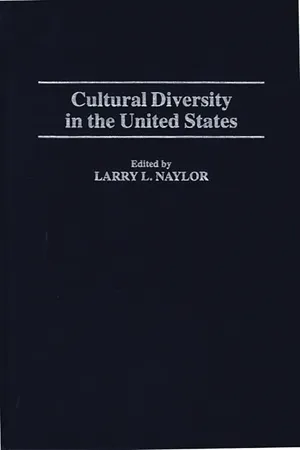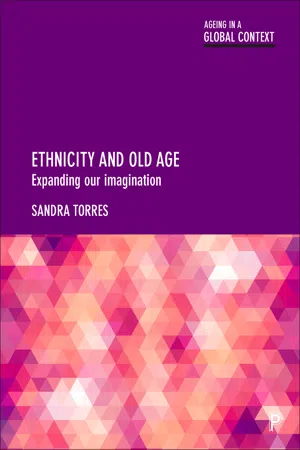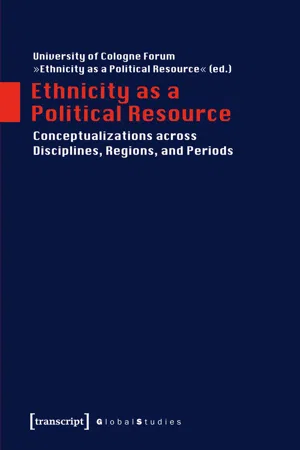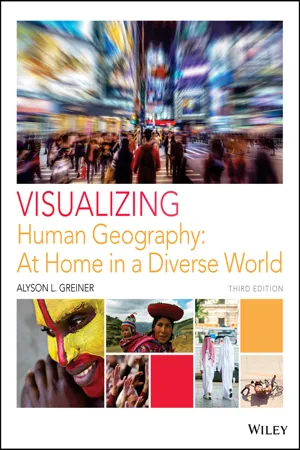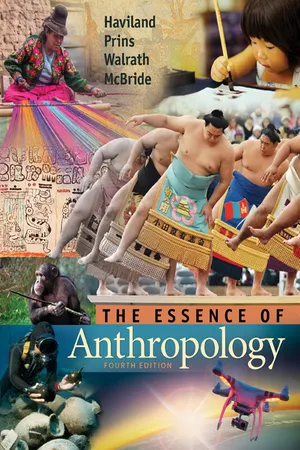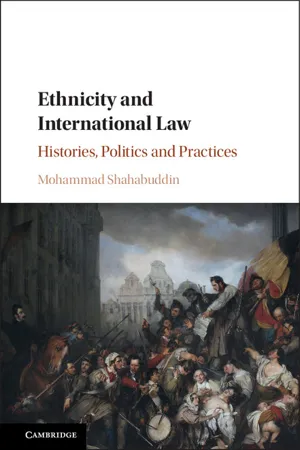Social Sciences
Race and Ethnicity
Race and ethnicity refer to social categories used to classify people based on shared characteristics such as ancestry, culture, and physical traits. Race is often associated with biological differences, while ethnicity encompasses cultural practices and traditions. These concepts are important in understanding social dynamics, inequality, and identity formation within societies.
Written by Perlego with AI-assistance
Related key terms
1 of 5
10 Key excerpts on "Race and Ethnicity"
- eBook - PDF
The Crisis of Race in Higher Education
A Day of Discovery and Dialogue
- William F. Tate IV, Nancy Staudt, Ashley Macrander, William F. Tate IV, Nancy Staudt, Ashley Macrander(Authors)
- 2016(Publication Date)
- Emerald Group Publishing Limited(Publisher)
SECTION 1 THE SOCIAL CONSTRUCTION OF Race and Ethnicity What is race? What is ethnicity? Race as a construct is rooted in false conceptions that observed physical differences are symbols of human capacity and behaviors. In this section, we will explore biological, historical, and social evidence to demonstrate that race is an idea manifested by human thought and interaction rather than a material fact supported by science. Similarly, ethnicity is a product of human invention and self-selection, and thus, like race, is socially constructed. Image: Visual Map of Panel Titled “The Social Construction of Race and Ethnicity,” Race & Ethnicity: A Day of Discovery and Dialogue À 2015 . Source : Maketa Wilburn Consulting. GENETICS AND THE ORIGINS OF RACE Robert Sussman † , Garland Allen and Alan Templeton Image: Illustration, Race & Ethnicity: A Day of Discovery and Dialogue À 2015 . Source : Dave Gray, friend of Washington University in St. Louis. The Crisis of Race in Higher Education: A Day of Discovery and Dialogue Diversity in Higher Education, Volume 19, 3 À 15 Copyright r 2017 by Emerald Group Publishing Limited All rights of reproduction in any form reserved ISSN: 1479-3644/doi: 10.1108/S1479-364420160000019002 3 † The lead author, Robert Sussman, is sadly deceased. ABSTRACT Attempts to establish a biological basis for classifying human races into definable groups, arranged hierarchically from most advanced to least advanced, have a long and sordid history. From the days of the Spanish Inquisition, to the colonization of North and South America, the begin-nings of the slave trade, to more recent claims about inborn racial differ-ences in intelligence and personality, racists have tried to find biological differences that would separate the various races and provide a justifica-tion for social and economic exploitation. Biologically, races have been equated with subspecies as defined in the general biological literature. - eBook - PDF
- Patricia Hill Collins, John Solomos, Patricia Hill Collins, John Solomos(Authors)
- 2010(Publication Date)
- SAGE Publications Ltd(Publisher)
When it comes to the issue of the usage of categories such as race and ethnic-ity, however, it is also evident that there are noticeable divergences in the ways in which such categories are utilised. Although Race and Ethnicity are terms often used in conjunction, or in parallel, to refer to social groups which differ in terms of physical attributes accorded social significance in the case of race or in terms of language, culture, place of origin or common membership of a descent group without distinguishing physical characteristics in the case of ethnicity, there is no equivalent term to racism in relation to ethnicity (Brubaker, 2005; Cornell and Hartmann, 2007). As the account of Ralph Premdas in Chapter 12 argues, 4 THE SAGE HANDBOOK OF RACE AND ETHNIC STUDIES perhaps ethnic conflict is analogous, but this is more of a descriptive term used to describe certain consequences of the existence of different ethnic groups and the development of forms of conflict or tension between them. The recent explosion of scholarship and research has not only highlighted a certain lack of consensus but has also led to intense debate about the very lan-guage that we use in talking about race and racism. Over the past two decades or so, the shifting boundaries of Race and Ethnicity as categories of social analysis have become ever more evident (Alexander and Knowles, 2005; Knowles, 2003). In particular, a plethora of studies have provided new perspectives on difference, identities, subjectivities and power relations (Alcoff and Mendieta, 2003; Cornell and Hartmann, 2007). In this environment, ideas about race, racism and ethnicity have become the subject of intense debate and controversy. The role of racial and ethnic categorisation in the construction of social and political identities has been highlighted in a number of recent conflicts in various parts of the globe (Brubaker, 2004; Calhoun, 2007). - Sujata Patel(Author)
- 2009(Publication Date)
- SAGE Publications Ltd(Publisher)
ETHNICITY AND RACE WITHIN SOCIOLOGY IN THE COMMONWEALTH CARIBBEAN 299 analyses are predominantly institutionally based outside the region or in the interdisci-plinary Centre for Gender and Development Studies, 15 while ethnicity/race is mainly present as an implicit backdrop to work done by sociologists within the region. This selective review has tried to identify important currents within the study of ethnic-ity and race within the Caribbean. Perhaps as a result of the complex ethnic diversity of the region, Caribbean sociology has been in the forefront on several conceptual fronts in this field. Five synthetic points will be made in conclusion. There has been a long-standing understanding of the concepts of ethnicity and race as social constructs rather than pri-mordial, unchangeable characteristics. Due to the concepts of ‘creole’and ‘creolization’, despite their contested natures, there was an early shift from an ascribed and static con-ceptualization of ethnicity/race (which some critics argue is a weakness of M.G. Smith’s discussion of plural society) to a dynamic one, whether in terms of self-identification or identification attributed by others. Second, the possibility of having fluid or diverse identifications in terms of ethnicity, with the visible markers of ‘race’ as only one criterion of stratification, albeit an important one (Hall, 1977), has also become integral to the conceptualization of the intersection of class and ethnicity. Third, the complexity of ethnic and race relations has been a given in the region, one which has challenged the uncritical application of Eurocentric theoriz-ing about ethnicity and race from the United States and Britain. Similarly, the uncritical use of Eurocentric feminist theories (includ-ing American Black Feminism) has been challenged by the way indigenous theorizing integrates the intersection of gender, class and ethnicity/race.- eBook - PDF
- Larry Naylor(Author)
- 1997(Publication Date)
- Praeger(Publisher)
PART II Race, Ethnicity, and Culture A great many Americans see such things as the race, ethnicity, and culture as basically all the same. In fact, most Americans tend to think: "racial groups" are the same thing as "ethnic groups;" that ethnic groups are easily identifiable on the basis of racial classifications; and that both "race" and "ethnic group** are the same thing as a cultural group. From this practice has come the tendency to use the terms interchangeably, despite the fact that the practice repeatedly has been shown to be based on many false premises and assumptions, and generalizations and stereotypes that have led to many of the social problems associated with cultural diversity. Although some of the misunderstandings and negative consequences of race already have been discussed in Part I, it is imperative that special attention be directed at these things because of the significance and importance placed on them by most Americans. The tendency for people to categorize others on the basis of race, or observed physical characteristics, and then attribute social or cultural significance to them—superior or inferior status—is historically well established in Western culture. The resulting cultural minority status then attributed to such categories has produced dire consequences for a great many people, some of which continue to impact many Americans. The tendency to categorize ethnic groups on the basis of a single trait (e.g., language, food, etc.) is also historically grounded, and this too has produced dire consequences for many people. Another serious consequence of this practice has been the general loss of meaning with such concepts as ethnic and ethnicity. Both the concept of race and the concept of ethnicity generally have been used with culture, but they are not always equal to it. - eBook - PDF
Ethnicity and Old Age
Expanding our Imagination
- Torres, Sandra(Authors)
- 2019(Publication Date)
- Policy Press(Publisher)
Culture is, after all, the construct we use to refer to the ways in which ‘belonging’ becomes meaningful to people. In other words, there is a difference between the construct of ethnicity, race and culture that most ethnicity scholars tend to be pretty clear about ( Aspinall, 2007). This is why vast amounts of literature have been dedicated to the relationship between the construct of ethnicity and other constructs such as race and culture (Jenkins 1997; Cornell and Hartmann, 1998; Castles, 2000). But even though, technically speaking, ethnicity and race are not really the same thing, it is not uncommon for health researchers to use race as a differentiating category, and for social gerontologists interested in health inequalities to do the same. This is in part due to institutional requirements (such as, for example, the National Institute of Health in the US, which requires that researchers report the racial backgrounds of study participants), and may explain why so many of the publications reviewed in Chapters Four to Six either use ethnicity and race interchangeably or use one identification ground to refer to one of the groups in their sample and another one for another. Another reason why ethnicity and race tend to be used interchangeably, even though these constructs refer to different identification grounds is that in some parts of the world – due to historical events such as colonialism and the slave trade – the importance of skin colour is deemed to be worthy of its own attention. Elias and Feagin (2016) have recently argued, for example, that the importance of race cannot be relegated to the periphery of social scientists’ imaginations as long as institutional and systemic racism exist. In their thought-provoking book - eBook - PDF
Ethnicity as a Political Resource
Conceptualizations across Disciplines, Regions, and Periods
- (Author)
- 2015(Publication Date)
- transcript Verlag(Publisher)
At best our problems would no longer be ‘racial problems’” (1997: 102). While it is true that a mere change of terminology does not change the underlying problems – as the next paragraphs will show – it is important to note that race here is not an analytical category in the sense of describing a certain group, but an attribute describing the outcome of a process of discrimination. What remains problematic is that relying on the term ‘ race ’ contributes – at least discursively – to the persistence of the idea that distinctive racial groups exist, for example, through the frequent ticking of the ‘ race box ’ in various forms. Such forms of self-categorization as ‘ black ’ , ‘ white ’ , etc. further reinforce racial group identities, thus running at least partly counter to the intentions of affirmative-action policymakers. In contrast to ‘ race ’ , the term ‘ ethnicity ’ seems to be a rather “new” (1975: 1) concept, as Glazer and Moynihan state in one of the first compilations discussing the term. The question remains as to whether it provides a more open approach towards categorization that takes into account more than just biological or genetical factors. The difficulty again lies in the definition, as the general meaning of ethnicity still remains fuzzy today, ranging from the essence of an ethnic group, to the feeling of belonging to such a group, to the marker of difference from other ethnic groups (Tonkin et al. 1989). Most recent theoretical literature follows an “umbrella classification” (cp. Chandra 2006: 397 for a more comprehensive list), in which a shared culture, a common ancestry/kinship (real or imagined) and some form of group membership are central aspects of defining an ethnic group. - eBook - PDF
Visualizing Human Geography
At Home in a Diverse World
- Alyson L. Greiner(Author)
- 2017(Publication Date)
- Wiley(Publisher)
Even though many countries collect data in order to chart ethnic or racial affiliation, there is considerable spatial variation in the use of terms such as ethnicity and race around the world. The sociologist Ann Morning has produced a fascinating study of the geographic differences in the terminology and meaning of words, including ethnicity, race, indigenous group, and nationality on official censuses. Her study reveals that most countries do enumerate their populations on the basis of some form of national, ancestral, or ethnic identity. The most common term used in such questions is ethnicity. “More specifically,” Morning explains, “census usage of race is found almost entirely in the former slaveholding societies of the Western Hemisphere and their territories” (Morning, 2008, p. 248). Globally, the United States is one of a small number of countries that use the term race on its census form. Before examining the implications of this practice, let’s first consider the role of the U.S. Census Bureau, and how census data are gathered and reported. The United States Census Bureau is the govern- ment agency responsible for enumerating the country’s population. A crucial reason for the census is to ensure proper political representation (see Chapter 7) and to plan for the provision of public services. The Census ethnic group are closely related, they are not synonymous. Nationality expresses a person’s affiliation with a country, usually in terms of citizenship. When speaking of ethnicity, geographers recognize that it has different facets. For example, ethnicity has internal, personal components as well as external, be- havioral components. A personal component of ethnic- ity includes who we think and feel we are. This sense of identity may or may not stem from a person’s ancestry. - eBook - PDF
- William Haviland, Harald Prins, Walrath, Bunny McBride, William Haviland, Harald PrinsWalrath, Bunny McBride(Authors)
- 2015(Publication Date)
- Cengage Learning EMEA(Publisher)
Human groups frequently insert a false notion of biological difference into the cultural category of race to make it appear more factual and objective. In various ways, cultures define religious, linguistic, and ethnic groups as races, thereby confusing linguistic and cultural traits with physical traits. For example, people in many Latin American countries classify one another as Indian, mestizo (mixed), or Ladino (of Spanish descent). But despite the biological connota-tions of these terms, the criteria used for assigning indi-viduals to these categories are determined by whether they wear shoes, sandals, or go barefoot; speak Spanish or an indigenous language; live in a thatched hut or a European-style house; and so forth. By speaking Spanish, wearing Western-style clothes, and living in a house in a non- Indian neighborhood, indigenous people shed their tribal identity and acquire a national identity as citizens of the country. Similarly, the ever-changing racial categories used by the U.S. Census Bureau both reflect and reinforce the conflation of the biological and the cultural. The 2010 list includes large catchall political categories such as white and black but asks for specific tribal affiliations of American Indians or Alaskan Natives, a designation that comes much closer to a population in the biological sense. The Census Bureau asks people to identify Hispanic ethnicity, independent of the category of race, but considers Arabs and Christians of Middle Eastern an-cestry as white (Caucasian) despite the political import of Arab and Muslim identity. To accommodate these am-biguities, the Census Bureau lets people check off multi-ple categories. That the purported race of individuals can vary over the course of their lifetime speaks to the fact that cultural forces designate membership in a particular racial category (Hahn, 1992). - eBook - PDF
Sociology
The Essentials
- Margaret Andersen, Margaret Andersen, Howard Taylor(Authors)
- 2019(Publication Date)
- Cengage Learning EMEA(Publisher)
This audit study, like numerous others, shows that discrimination occurs far more frequently than most people imagine (Feagin 2007). Stereotypes Racial and ethnic inequality in society produce racial stereotypes, and these stereotypes become the lens through which members of different groups perceive one another. A stereotype is an oversimpli- fied set of beliefs about members of a social group. Stereotypes are based on the tendency of humans to 2 LGBTQ is the term now used to refer to lesbian, gay, bisexual, transgender, and queer people. Like panethnicity, it is a term forged from political interests to link the identities and experiences of those whose sexual and gender identities depart from dominant norms; see Chapters 11 and 12. Copyright 2020 Cengage Learning. All Rights Reserved. May not be copied, scanned, or duplicated, in whole or in part. Due to electronic rights, some third party content may be suppressed from the eBook and/or eChapter(s). Editorial review has deemed that any suppressed content does not materially affect the overall learning experience. Cengage Learning reserves the right to remove additional content at any time if subsequent rights restrictions require it. CHAPTER 10 Race and Ethnicity 243 categorize a person based on a narrow range of perceived characteristics. Stereotypes are presumed to describe the “typical” member of some social group. They are usually incorrect. In everyday social interaction, people tend to categorize other people. Fortunately or unfortunately, we all do this. The most common bases for such categorizations are race, gender, age, sexual orientation, and disability. Quick and ready categorizations help people process the huge amounts of information they receive about people with whom they come into contact. We may be taught from childhood to treat each person as a unique individual, but clearly we do not, as research shows. - eBook - PDF
Ethnicity and International Law
Histories, Politics and Practices
- Mohammad Shahabuddin(Author)
- 2016(Publication Date)
- Cambridge University Press(Publisher)
181 Hawkins, 199. Given that all other psychological aspects of ethnicity outside the biolo- gical features are, according to Lapouge, again dependent on biology, an ethno actually equates to race. In this sense racial conflicts here mean what we understand as ethnic conflicts. 182 Lapouge, Les Selections, 225, cited in Hawkins, 199. 183 Henry Sidgwick, Philosophy: Its Scope and Relations. An Introductory Course Lectures (London: Theommes, 1998 [1902]), 174–211. 46 ethnicity in the discourse on the ‘self ’ & the ‘other ’ The categorisation of nations on the basis of their rank in the scale of progress clearly appeared in the writings of Scottish jurist James Lorimer, who asserted in 1883 that ‘[a]s a political phenomenon, humanity, in its present condition, divides itself into three concentric zones or spheres – that of civilised humanity, that of barbarous human- ity, and that of savage humanity’. 184 He hails the emergence of ethnol- ogy as a new field of study in the opening statement of his work: ‘No modern contribution to science seems destined to influence inter- national politics and jurisprudence to so great an extent as that which is known as ethnology, or the science of races’. 185 However, far from being homogeneous, international lawyers soon followed the parallel streams of liberal and conservative understandings of the role of ethnicity in the construction of the national self-image; hence, there appeared con- trasting images of state and sovereignty – the foundational notions of nineteenth-century international law. Liberal international lawyers of the nineteenth century related their nationalism to a wider vision of European civilisation, sometimes within a cosmopolitan framework. 186 For Pasquale Fiore, law was a spontaneous outgrowth of society rather than an effect of sovereign decision. At the same time, he firmly believed that given the unity of the human species, the law governing humanity must also be universal.
Index pages curate the most relevant extracts from our library of academic textbooks. They’ve been created using an in-house natural language model (NLM), each adding context and meaning to key research topics.


